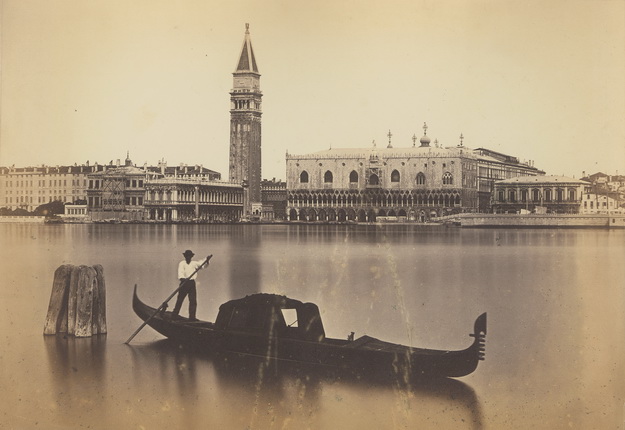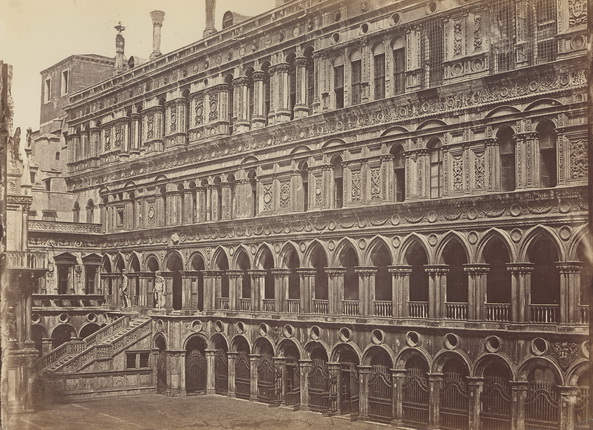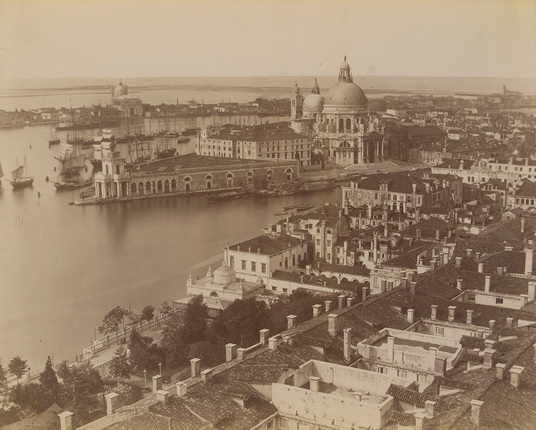Grand Tour: Russian version. Venice
Pavel and Anastasia Khoroshilov’s collection




Carlo Naya. View of the Biblioteca Marciana, the Campanile di San Marco and the Ducal Palace. Venice. 1875
Domenico Bresolin. The Scala dei Giganti, the courtyard of the Palazzo Ducale. 1858
Carlo Naya. View of the Canal Grande taken from the Campanile di San Marco. Venice. 1870s
Carlo Ponti. Canal Grande. Venice. 1860s
Moscow, 17.05.2016—19.06.2016
exhibition is over
Share with friends
The Multimedia Art Museum, Moscow presents the exhibition ‘Grand Tour: Russian Version. Venice’ from the collection of Pavel and Anastasia Khoroshilov, featuring a series of landscape and architectural photographs of the ‘city on water’. This is the third series in the project ‘Grand Tour. Russian Version’. The two previous exhibitions at MAMM in December and February proved immensely popular with the public, these being devoted to historic photographs of Rome and Naples.
Curator: Anastasia Korotkova
For the press
The Multimedia Art Museum, Moscow presents the exhibition ‘Grand Tour: Russian Version. Venice’ from the collection of Pavel and Anastasia Khoroshilov, featuring a series of landscape and architectural photographs of the ‘city on water’. This is the third series in the project ‘Grand Tour. Russian Version’. The two previous exhibitions at MAMM in December and February proved immensely popular with the public, these being devoted to historic photographs of Rome and Naples.
In the words of Joseph Brodsky, Venice is ‘the city of the eye; your other faculties play a faint second fiddle’. Today it is very hard to see Venice ‘as such’, since our perception is conditioned by the artistic images created over many centuries that comprise the ‘Venetian myth’, with its multiple allusions and associations. Whimsically uniting both past and present, this city has always been steeped in an atmosphere of mystery, attracting writers, artists, intellectuals and travellers from the far corners of the world.
Venice has scarcely altered in the last three centuries. The city acquired its unique architectural appearance due to prodigious donations from Venetian merchants. ‘The Stones of Venice’ (1853), one of the most important and voluminous works by famous English historian, art critic and lover of photography John Ruskin, provides us with a study of the various architectural styles found in this ‘pearl of the Adriatic’.
A visit to the ‘city on water’ was an obligatory part of the programme for the Russian Grand Tour. Venice became an essential stop on a fascinating journey that began in Rome and continued to Naples. The Russian literary and artistic ‘Veniciana’ is very extensive. Pyotr Vyazemsky, Fyodor Dostoyevsky, Pyotr Tchaikovsky, Mikhail Vrubel, Alexander Blok, Sergei Diaghilev, Alexandre Benois and Valentin Serov were all entranced by the city, creating images of their own personal Venice.
By the mid-1850s Venice became the second most photographed city in Italy, after Rome. A multitude of photography studios opened there and jostled for trade. Venetian photography largely consists of architectural views portraying the city and its environs. Each frame acquires depth from the play of light and reflections. Favourite subjects for local photographers were images of gondolas gliding along the Grand Canal, the striking architecture of ancient palazzos, and the bridges steeped in legend that connect the banks of different canals. Photographic views of the piazzas by St. Mark’s and the Doge’s Palace took pride of place.
One of the first amateur photographers to produce a series depicting the sights of Venice was the professional artist Domenico Bresolin. Due to their precisely arranged composition his large-format prints from the 1850s on salted paper, which gradually supplanted daguerreotypes, were highly esteemed by art critics of the period and became very popular.
Swiss-born Carlo Ponti and the Italian Carlo Naya were regarded as the creators of Venetian views in photography. Their images of the city’s architecture and the interior furnishings of the basilicas and palazzos brought them fame. The most successful photographers in Venice, they opened a studio in 1857.
By the 1870s 25 shops belonging to photographers stood on St. Mark’s Square. Thanks to the development of photographic techniques, albumen prints became available to a wider circle of customers, from art historians to prosperous tourists who wished to acquire an image of the city’s most important sights as a memento.
The photographs shown in this exhibition were taken by Italian photographers who were all well-known at the time — Carlo Naya, Carlo Ponti, Domenico Bresolin, Luigi Sacchi and Maurizio Lotze, and brought back by Russian sightseers who visited Venice in the second half of the 19th century. Thanks to them we have an opportunity to immerse ourselves in the wonderful atmosphere that pervaded Venice during that period.
Corporate trustee
General radio partners |
Strategic information partners |
Special media partner
Information partners





